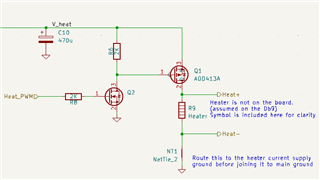I have a system which controls the temperature of a few Ohm load by intermittently running current though it via a PWM signal to the gate of a MOSFET. I have a large capacitor nearby so that the voltage remains stable. I am considering using the TPS22810 to reduce the inrush current which will be drawn when the circuit is initially connected to the supply.
However I am confused by section 10.4 in the datasheet which recommends an input capacitor 10x as large as the output capacitor. If i need to use a large input capacitor it would invalidate the reason I am using the TPS22810.


